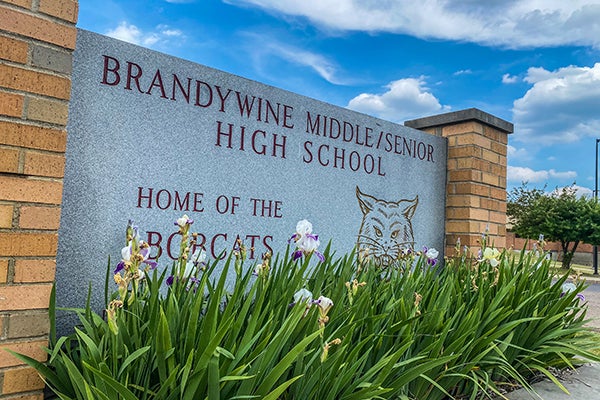History Center preserves horticulture heritage
Published 12:00 pm Saturday, June 9, 2012

End of season peppers and tomatoes ripen in front of the Murdock Log Home at the History Center at Courthouse Square. Off the Water photo/TERRI GORDON
The homestead garden was once a family’s only access to fresh food: a difficult concept to grasp in this day of 24-hour supermarkets, according to Bob Myers, of the History Center at Courthouse Square in Berrien Springs.
“A garden offered families of the time their only means of obtaining fresh vegetables. That’s something we seldom think about in our age of canned and frozen foods from the supermarket.” he said. “In the early 19th century, stores could only offer staples: flour, sugar, salt and the like. Families grew their own food, and preserving it meant drying, pickling, smoking and salting. Fresh vegetables from the garden must have been a real treat.”
Heritage Garden, outside the Murdock Log House at the History Center, replicates what a garden would have looked like in the early- to mid-1830s. It sports vintage Jacob’s Cattle beans, corn squash and Hungarian wax peppers. Broomcorn, used literally for making brooms, is also grown in the garden.
Sawyer resident John Frambach designed and constructed Heritage Garden several years ago as a requirement for the Michigan State University Extension’s Master Gardener program. He continues to maintain it. According to Frambach, the plants in the garden would have been readily found in the region during the 1830s.
While the Heritage Garden is restricted to plants from the 1830s, Frambach says the definition for vintage, or heirloom plants is a bit broader. The broadest test of vintage-hood is whether or not the plant can reproduce a true copy of itself.
“In a little tighter sense,” said Frambach, “a lot of people consider heirloom plants those that were popularly used prior to the late 1800s, or in the early 1900s, before hybridization really started in mass distribution through catalogs.”
Heirloom varieties are different from the native plants that grow naturally. Vintage varieties are imports to the region. Many were brought by immigrants carrying seeds from the “old country” in their pockets. Once imported, they were cultivated and passed on to others through seeds or cuttings.
Heirloom flowers and vegetables are finding their way back into backyard gardens as people rediscover the smells and flavors that are lacking in modern hybrids.
Aesthetics are not the only reason for growing vintage stock. Gene pool is another. Modern hybrids, developed to stand up to shipping and handling, and to last longer on the grocer’s shelf, can’t reproduce themselves. If the heirloom varieties were to be lost, the hybrids created from them can’t be produced. Extinction is the worst possible scenario.
Gardeners may fear that older varieties are not as disease resistant as some of the newer hybrids or may require a bit more care, but proponents say it’s worth any extra effort for the quality of flavor and fragrance.
“There’s no more downside than there is in any kind of gardening,” said Frambach.
People can visit the Heritage Garden at the History Center at Courthouse Square, located at the corner of Union Street and U. S. 31, in Berrien Springs. Further information, and business hours are available at (269) 471-1202.





